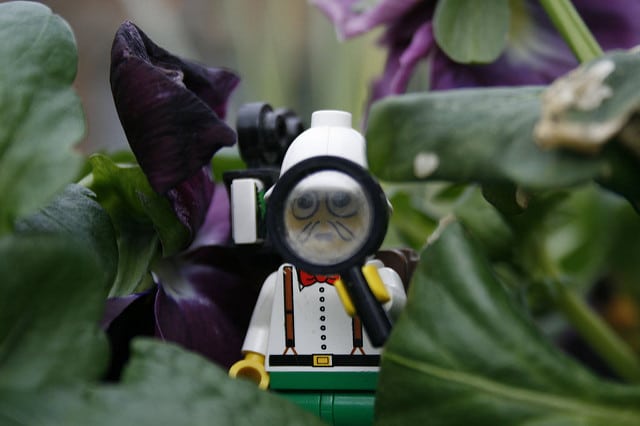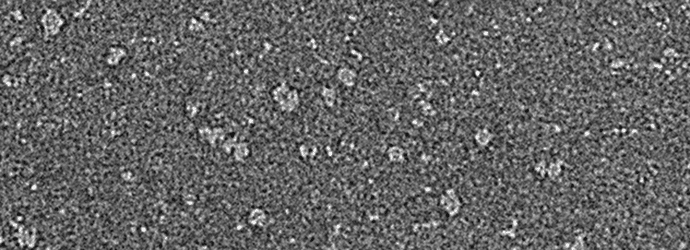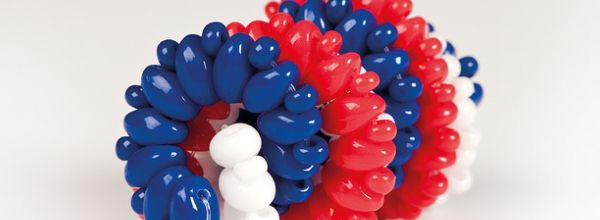Imagine trying to build a house without power tools: It’s completely doable – after all, people did it that way for centuries – but it’ll take you a lot longer and has limits. Similar to this, modern day biology now has its own set of “power tools.” So while you could do biology the old-fashioned way, you would be missing out on a lot of powerful techniques. Traditionally, you would have to perform a series of Western blots to profile proteins in your sample, and distinguishing active enzyme forms from inactive forms would be inferred through things like phosphorylation status. But now you can use activity-based probes (ABPs) for activity-based protein profiling (ABPP) to not only profile proteins, but profile active proteins.
How ABPP Works
Activity-based probes exploit an enzyme’s activity for labeling and detection. ABPs typically have three main parts
Part 1: A Reactive Group
This part binds to the active site of a particular enzyme class via a covalent interaction. This ensures that the probe sticks to the enzyme it is designed for and that it stays stuck.
Part 2: A Specificity Element
This part helps the probe target a particular class of enzymes, or even particular enzymes within the class. For example: Proteases, esterases, and phospholipases are all serine hydrolases, and you can use a general serine hydrolase ABP to profile all of this superfamily. Alternatively, you can use a protease-targeted probe to profile just the protease subfamily. Cook’s choice.
Enjoying this article? Get hard-won lab wisdom like this delivered to your inbox 3x a week.

Join over 65,000 fellow researchers saving time, reducing stress, and seeing their experiments succeed. Unsubscribe anytime.
Next issue goes out tomorrow; don’t miss it.
Part 3: A Reporter Tag
This part allows you to detect your enzymes using a variety of techniques, typically a fluorophore or an affinity handle. You can also use an azide or an alkyne for a “clickable” ABP. And without the reporter group, you’ll simply have an enzyme inhibitor.
ABPP Detection Techniques
ABPP is a powerful technique for exploring a variety of biological questions with great flexibility in detection methods. Here are a few of the detection methods you can use with ABPP:
Gel-Based Detection
This method is often used with fluorophore-labeled ABPs. It involves separating the labeled proteins by SDS-PAGE and imaging the gel with a fluorescence scanner. In this method, fluorescent bands indicate labeled proteins within the gel.
Mass Spectrometry-Based Detection
This detection method is often used with biotinylated ABPs. ABP-biotin-labeled protein can be separated from all of the other proteins in the cell using streptavidin resin. Then, you can definitively determine the identity of these labeled proteins through mass spectrometry (MS)-based peptide sequencing. When combined with additional strategies like stable isotope labeling with amino acids in cell culture (SILAC), this method can also yield quantitative information.
Imaging-Based Detection
ABPs can even be used with fluorescence microscopy to visualize protein localization in cells or with PET to image in whole organisms. Pretty cool.
Competitive ABPP as Alternative to Click Chemistry ABPP
Consider this scenario: You screened a compound library and found a molecule that potently kills cancer cells while having no effect on normal cell viability. Based on the structure you think this new molecule is a covalent kinase inhibitor. But how will you determine what kinase(s) it’s hitting?
In a perfect situation, you would perform Click Chemistry ABPP: You chemically modify your lead compound to contain an alkyne or azide handle and then use Click chemistry to conjugate an affinity group post-labeling to identify your inhibitor target(s) using MS-based proteomics.
But this is easier said than done. Not everyone has the chemistry savvy (or a best friend synthetic chemist) to turn their lead compound into an ABP, and some molecules aren’t easy to modify. In that case, you can perform Competitive ABPP using a broadly reactive kinase ABP. Your lead compound will block the kinase ABP from binding and therefore prevent the detection of its targets. By comparing these enzyme activities with those of an untreated control, you will be able to identify the targeted enzymes.
So do you think ABPP is just the thing your research needs? What complex experiments can you think up? Leave a comment.
References:
Sanman, L.E. and Boygo, M. 2014. Activity-Based Profiling of Proteases. Annu. Rev. Biochem. 83: 247-273.
Niphakis, M.J. and Cravatt, B.F. 2014. Enzyme Inhibitor Discovery by Activity-Based Protein Profiling. Annu. Rev. Biochem. 83: 341-377.
You made it to the end—nice work! If you’re the kind of scientist who likes figuring things out without wasting half a day on trial and error, you’ll love our newsletter. Get 3 quick reads a week, packed with hard-won lab wisdom. Join FREE here.






